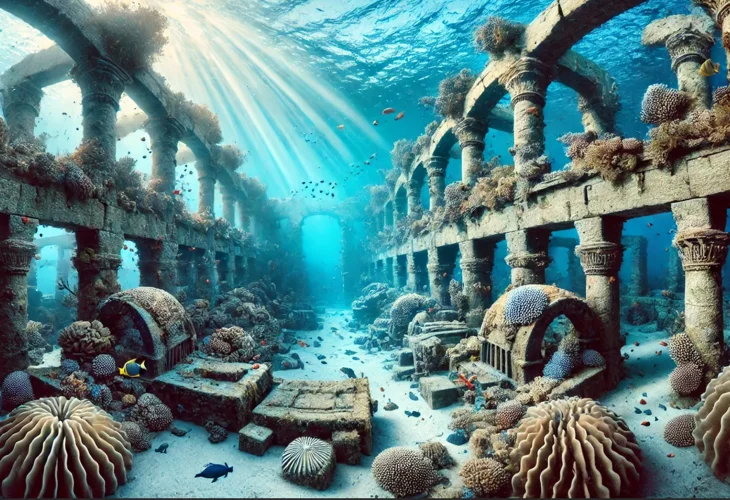Unveiling the Lost Cities Beneath the Sea: Ancient Tales Rediscovered
Initially dismissed by researchers, these ancient stories proved true as underwater archaeology unveiled entire cities buried beneath the waves.

According to ancient Jewish sages, there were times throughout history when the sea rose and flooded areas of land, leaving them submerged beneath the ground, including parts of the Mediterranean Sea near Israel.
The Midrash recounts, "Twice, it is written, the sea was called upon to flood the land."
To what extent did the sea rise the first and second times? Rabbi Yudan, Rabbi Abbahu, and Rabbi Isaac named Rabbi Hanina: the first time, it reached Acre and Jaffa. The second time, it reached the coast of North Africa.
Rabbi Hanania and Rabbi Acha named Rabbi Hanina: the first flood reached North Africa. The second reached Acre and Jaffa, as it is written (Job 38): 'Thus far you shall come, but no further, and here shall your proud waves be stayed.'
Rabbi Eliezer named Rabbi Hanina stated: the first time, it reached Calabria. The second time, the coast of North Africa."
In the early days of research, such stories were dismissed. Could anyone really have known the past, skeptics asked?
Yet with time, it became clear that indeed, the sea had "conquered" parts of the land throughout history, submerging entire cities. About thirty years ago, maritime archaeologist Ehud Galili was diving off the coast of Atlit, about 400 meters from the shore, where he had often explored before. To his astonishment, he suddenly discovered a large brick wall, a kind of "underwater Western Wall." The discovery stunned him and its implications. It became clear that a whole ancient village had been buried beneath the sea, covered by sands over millennia, until an underwater storm revealed them.
Beyond the wall, which was part of this ancient settlement, they found remnants of about forty stone buildings, a well, tombs, tools, and animal remains, just like any village on land. All at a depth of about 12 meters below sea level. A hydrological analysis of the well revealed that the village was not on the shore back then: it was 5 meters above sea level!
Thus, ancient traditions passed down by sages preserved real knowledge. Of course, the sages didn't dive off Atlit's coasts, yet they knew that the Mediterranean had been lower in the past, and the settlements there had been flooded.
Another lost city is Heracleion near Alexandria. The city is mentioned in several Egyptian inscriptions, but researchers assumed it was just a myth and never attempted to locate it. But about twenty years ago, French archaeologist Franck Goddio, who was searching for 18th-century French warships, saw giant faces emerging from Alexandria's bay.
Among the underwater ruins Goddio found were 64 ships, 700 anchors, a treasure of gold coins, 4.5-meter-tall statues, and most notably, remnants of a massive temple.
The granite ruins and findings were well preserved. The city, built around its great temple, had a network of canals - like an ancient Egyptian Venice. The city dominated trade into Egypt.
Over 2,000 years ago, Thonis-Heracleion was undoubtedly one of the world's great port cities. But as the sages explained the scripture, "He called to the sea and said 'thus far you shall come,'" and so the city sank beneath the sea, claiming yet another piece of land.

